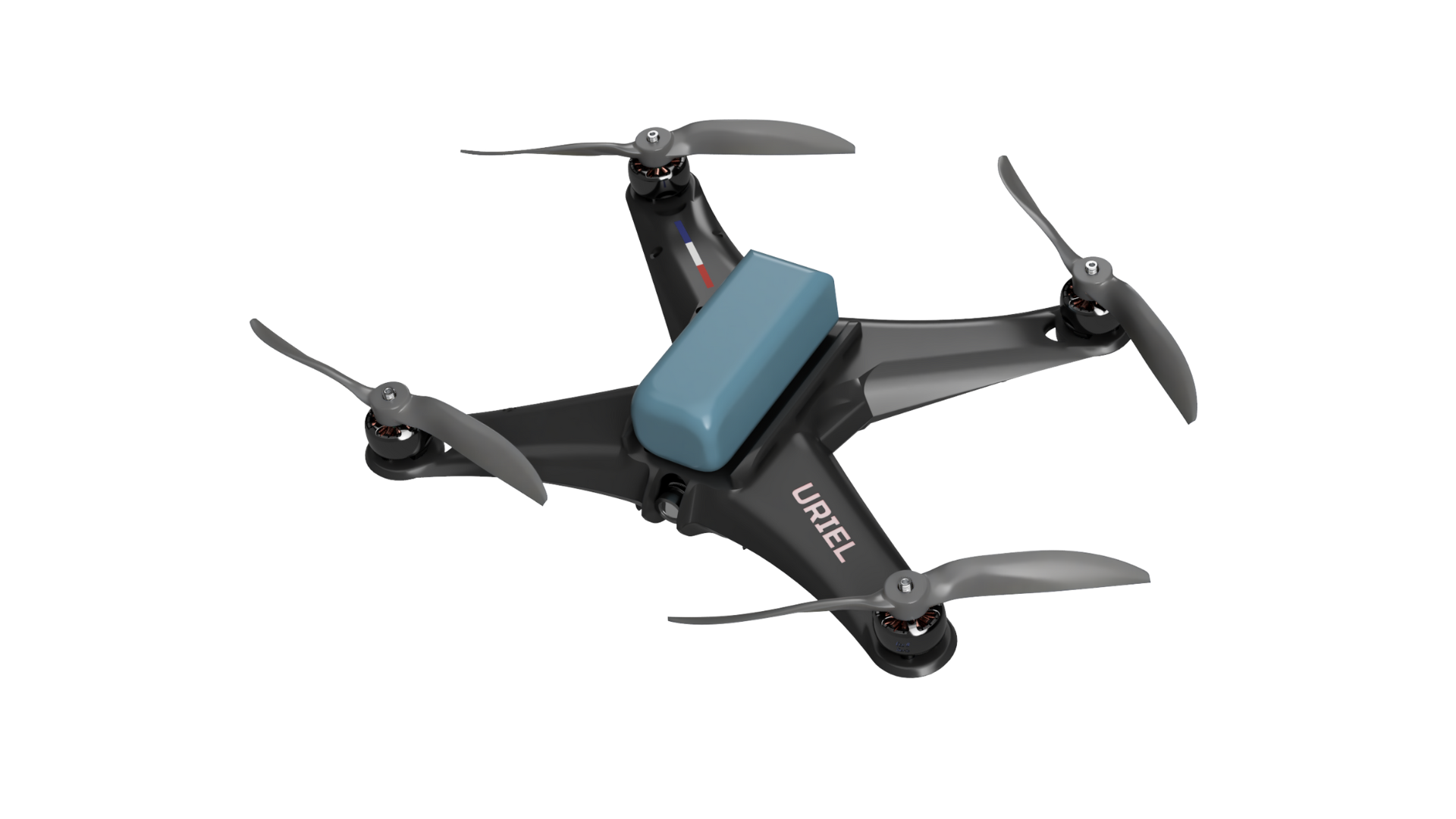What is an FPV drone?
An FPV(First Person View) drone is a remote-controlled aircraft equipped with a camera that transmits images in real time to a pilot on the ground. The pilot, equipped with immersion goggles or a screen, controls the drone as if he were on board, offering an immersive and precise flying experience.
This technology, once reserved for recreational use, has now diversified into a wide range of applications, from sports competitions to military surveillance or combat missions. The rise of FPV drones is due to their agility, their low cost compared with conventional military drones, and their ability to transmit live images with low latency.
In this article, we'll explore the different applications of FPV drones, highlighting their role in both the civilian and military sectors.
Civilian FPV drone applications
Leisure and competition: a booming passion
FPV drones have revolutionized the world of model flying and aerial leisure. Thanks to their speed and maneuverability, they enable enthusiasts to perform spectacular aerial acrobatics or explore otherwise inaccessible landscapes.
FPV racing, or immersive drone racing, has become a sport in its own right. These competitions, in which pilots compete on complex circuits dotted with obstacles, require sharp reflexes and technical mastery. Events such as the Drone Racing League (DRL) are attracting an ever-growing audience and increasing media coverage, boosting interest in the discipline.
Beyond the pleasure of flying, FPV drone competitions stimulate innovation in on-board technologies, pushing manufacturers to improve the speed, autonomy and responsiveness of their aircraft.
Aerial photography and videography: a new perspective
The rise of FPV drones has also transformed aerial photography and videography. Unlike conventional drones used in film or real estate, FPV drones offer unrivalled freedom of movement, enabling dynamic, immersive shots.
Many videographers exploit this technology to capture spectacular images, notably in music videos, commercials and film productions.
Thanks to their maneuverability and the quality of the images transmitted, these drones are particularly popular for fast-moving shots, such as those taken at extreme sporting events.
In the real estate or tourism sectors, FPV drones can also be used to enhance the value of sites by offering immersive 360° tours, providing a unique experience for potential buyers or visitors.
Inspection and monitoring: an asset for industry and safety
In the industrial sector, FPV drones have become essential tools for inspecting hard-to-reach infrastructures such as bridges, power lines, pipelines and wind turbines. Their ability to fly in confined spaces and transmit images in real time facilitates the work of engineers and technicians, reducing the costs and risks associated with traditional inspections.
In the field of security, FPV drones are increasingly used by law enforcement agencies and surveillance companies. They can be used to monitor sensitive areas, control crowds at events or provide perimeter security for strategic sites. Their speed of intervention and discretion make them invaluable allies in incident prevention.
Military applications of FPV drones
Intelligence and reconnaissance: state-of-the-art technology
Armed forces around the world are increasingly integrating FPV drones into their intelligence and reconnaissance operations. These devices offer real-time surveillance capability, enabling them to observe enemy movements, identify targets or map hostile areas.
Their small size and agility make them difficult to detect by radar or conventional defense systems. They are used both in modern conflicts and in counter-terrorism operations, where stealth and responsiveness are essential.
In some operations, FPV drones can be equipped with thermal or infrared sensors, enhancing their effectiveness on missions at night or in difficult terrain.
Tactical and offensive support: the emergence of kamikaze drones
Beyond reconnaissance, FPV drones are now used for offensive missions. Equipped with explosive charges, they can be precisely aimed at enemy targets, neutralizing vehicles, infrastructure or fortified positions.
This approach, dubbed "kamikaze drones", has been widely publicized in recent conflicts. In March 2025, Ukraine carried out an innovative attack involving 50 unmanned ground and air vehicles against a Russian bunker near Kharkiv. This event marked a turning point in modern warfare, where humans are increasingly removed from front-line combat.
The use of FPV drones for targeted attacks is growing rapidly, as they minimize human casualties while increasing the effectiveness of military strikes.
Training and education: a tool for modernizing the armed forces
FPV drones are also used in military training, simulating combat scenarios or emergency situations. They can reproduce a variety of environments, giving soldiers realistic preparation without exposing them to real dangers.
In some armies, these drones are used to train special forces in rapid reconnaissance in urban or hostile environments. In this way, they help to improve the responsiveness and efficiency of troops in the field, while optimizing resource management.
A promising future for FPV drones
FPV drones, initially designed for leisure use, have rapidly found their way into a variety of fields, from sports competitions to military operations. Their ability to provide an immersive real-time view, combined with their maneuverability and versatility, make them invaluable tools in many sectors.
In the civilian sector, they have become major players in entertainment, videography and industrial inspection. On the military side, they are revolutionizing combat and surveillance strategies, redefining modern warfare.
As technology continues to evolve, it's likely that FPV drone applications will expand even further. Advances in autonomy, artificial intelligence and image transmission promise a future where these devices will play a central role in many industries.
Whether for sport, security or defense, FPV drones are now a must-have technology, and their influence will only grow in the years to come.
